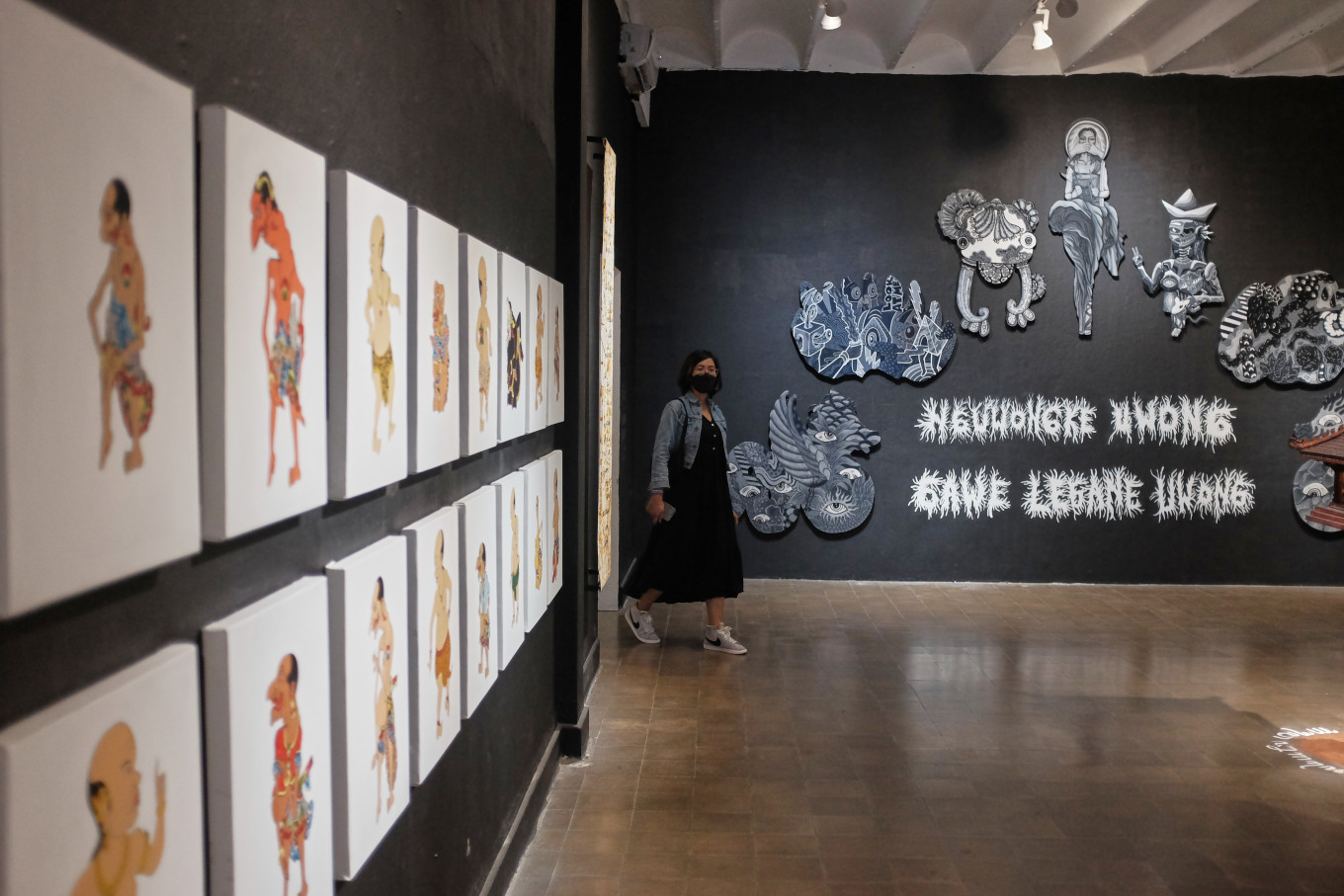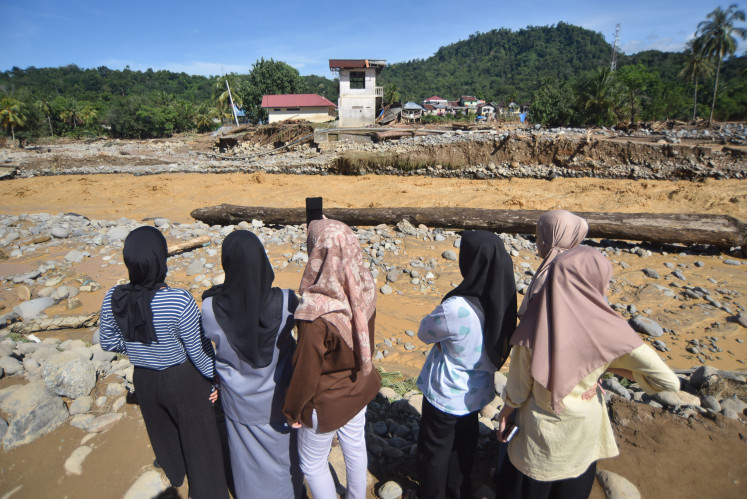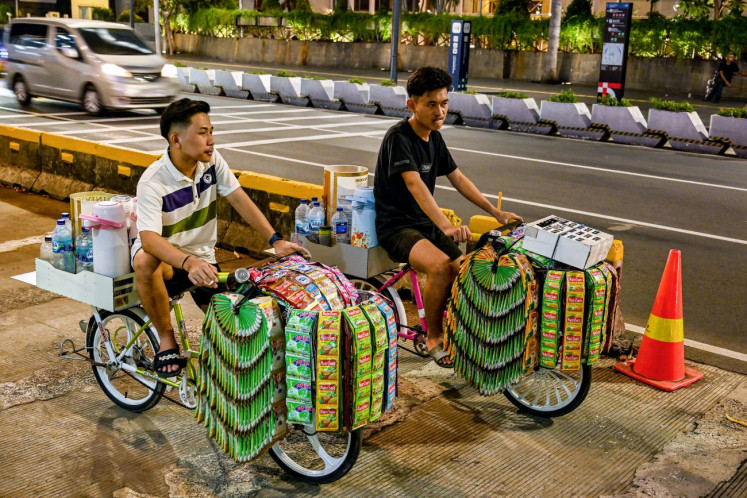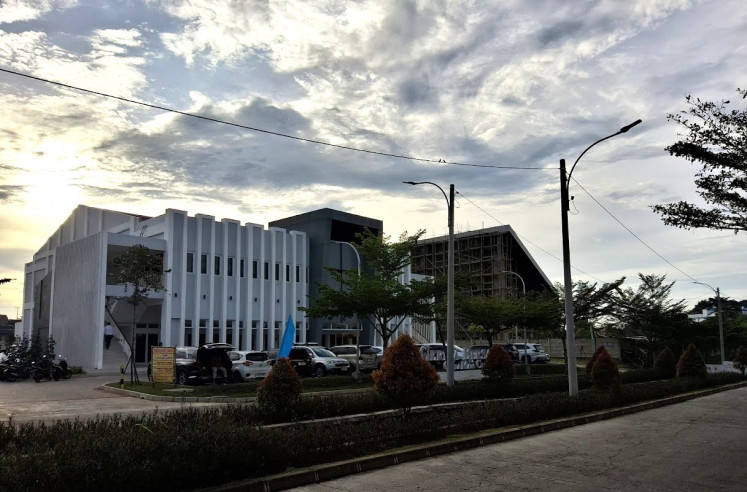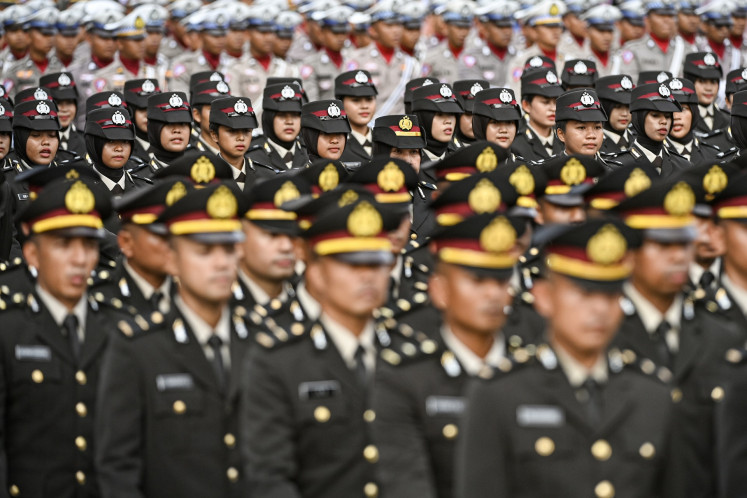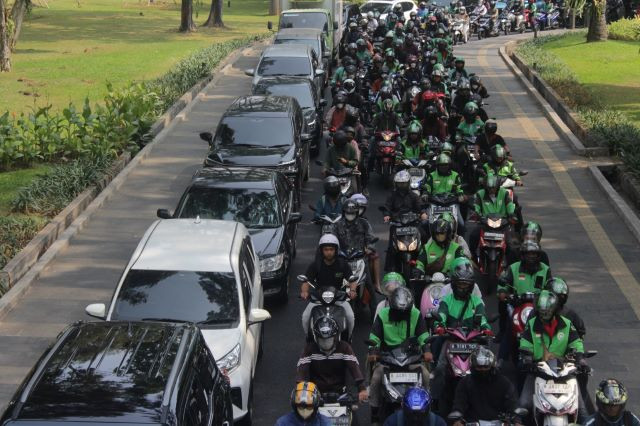Popular Reads
Top Results
Can't find what you're looking for?
View all search resultsPopular Reads
Top Results
Can't find what you're looking for?
View all search resultsInclusive policy and practices as a tool for future-proofing society
People with disabilities can be powerful agents of change, and their inclusion benefits society by fostering diversity, breaking barriers and driving innovation.
Change text size
Gift Premium Articles
to Anyone
I
magine looking forward to attending school, starting a job or simply visiting a public space, only to encounter barriers at every turn, no ramps for your wheelchair, no accessible signage and no accommodations for your unique needs. For millions of Indonesians with disabilities, this is not just an occasional inconvenience; it is a constant, daily struggle.
The challenge is not about their bodies or abilities but how society designs and organizes itself. Schools, workplaces and public spaces often fail to account for the diversity of human needs, creating barriers that exclude rather than include. Removing these barriers is not just about accessibility; it is about fairness and recognizing the inherent value of every Indonesian.
According to 2020 data from Statistics Indonesia (BPS), approximately 22 million Indonesians live with disabilities, accounting for 5 percent of the population. However, this number likely underrepresents the actual scale.
The United Nations highlights the likelihood of under-reporting disabilities, citing a significant gap compared with the global average of 15 percent. Setting aside disparities in numbers, 22 million livelihoods of varying ages are challenged daily. Some should be at their most productive years, studying, working and contributing to society, yet remain largely invisible, even in major cities.
The underreporting of disabilities leads to underrepresentation, diminishing the urgency to address their needs. This preserves systemic societal inaction, leaving people with disabilities marginalized and excluded from mainstream society. Gender equality, disability and social inclusion (GEDSI) advocates for inclusive approaches across sectors, aligning with diversity, equity and inclusion (DEI) principles.
DEI must go beyond slogans to address systemic barriers affecting minority groups, including people with disabilities. The question remains: How can disability be fully integrated into the mainstream when it is often overlooked in DEI discussions?
Two main misconceptions persist about disability. First, the general public often fails to consider that disabilities are not always conditions someone is born with, physical or mental impairments can occur due to accidents, illness, or, most likely, old age. Second, individuals are rendered “disabled” not by their impairments but by societal structures that are disabled.
People with disabilities face ableism that is both cultural and structural, stemming from prejudices of not being as “normal” as the nondisabled majority. These differences set them apart, leading to discrimination and exclusion from public life.
Beyond underrepresentation, people with disabilities are frequently denied fundamental rights, particularly education. Nearly 30 percent of children with disabilities lack access to education, and those who do attend are often underserved, according to a World Bank report.
Invisible disabilities compound the issue, conditions like ADHD or autism spectrum disorders that affect interaction and learning but are not visibly apparent. As they are not immediately recognized as “disabled,” individuals often lack access to resources for equitable participation, with blame placed on them rather than on inadequate societal structures.
This reinforces ableist ideologies, shaping public opinion, urban design and school curricula. These systemic barriers perpetuate inequality by falsely implying that people with disabilities lack independence or leadership potential.
Disability is not an inherent trait but a result of systemic barriers. Deaf individuals can communicate when language barriers are removed, and those with learning disabilities can thrive with the right support. Yet, society remains largely unprepared to meet their needs. Change begins by acknowledging these barriers, as emphasized in the social model of disability, also known as the barriers-based approach. Disability inclusion is not about changing individuals but about transforming society. Adopting this model across sectors promotes inclusion through initiatives led by people with disabilities.
Providing equal opportunities in education is essential to ensure the diverse voices of people with disabilities are heard. Universities are encouraged to establish disability service units to dismantle barriers.
Wuri Handayani, a lecturer with a disability at Gadjah Mada University and a recipient of Alumni UK Social Action Grants from the British Council, initiated the “buddy system”, a program where non-disabled students support their peers with disabilities. Through her experience studying in the UK, where assistance for students with disabilities is standard practice, this initiative bridges gaps and promotes inclusion, allowing students to learn from each other’s experiences and laying the foundation for an inclusive society.
Arts and culture are pivotal in bringing visibility to the disabled community. In Yogyakarta, one of Indonesia’s cultural hubs, the art collective Jogja Disability Arts, recently collaborated with DaDaFest UK on a research project titled PRISM. This project delves into the key elements of meaningful disability arts collaboration.
A primary tool in the study is a modified body-mapping technique, which combines art and creative methods to provide a space for participants to reflect on and redefine their experiences as disabled artists. Mainly driven by the youth, this initiative amplifies their voices and showcases their creativity, building solidarity and connecting communities beyond barriers.
Inclusion is a collective responsibility. People with disabilities can be powerful agents of change, and their inclusion benefits society by fostering diversity, breaking barriers and driving innovation. Supporting their leadership is essential to empowering them as community changemakers.
Governments and organizations must embrace the social model of disability to ensure accessibility in infrastructure, education, digital spaces and workplaces. Through arts and advocacy, people with disabilities can amplify their voices, mainstream their presence and influence inclusive policies.
Ultimately, anyone can become disabled, through accidents, illness or aging. Building an inclusive environment with accessible infrastructure and supportive policies and erasing harmful stereotypes is key to creating a future where no one is left behind. A genuinely inclusive society ensures equity for all.
***
The writer is the country director Indonesia and director of Southeast Asia of the British Council.

